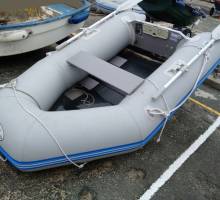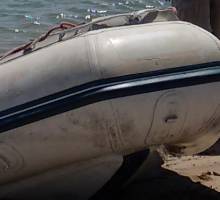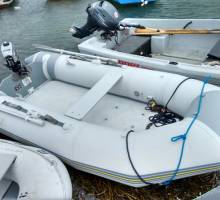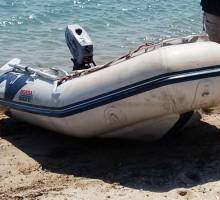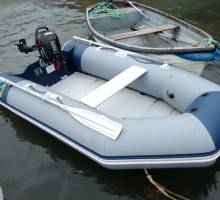
Dinghy Dilema - Choosing your next Inflatable dinghy
What ever your next dinghy is, its always a compromise, but getting the balance right for practicality, cost and usability is really important. We look at various types of used dinghies.

What's important in your next cruising dinghy?
- High tubes - Two really important factors here,
- Makes it easier for older, smaller people and animals to get in and out of the dinghy from your boat.
- Prevents water slopping into when you are boarding your boat, plus protection from seas in windy weather.
- Flooring - Ideally a hard floor, shaping the keel, is the best so that you get good motion through the water, plus doesn't leak and keep your feet dry. We opted for an inflatable V/keel shaped floor, this also raises the dinghy bow giving more protection in choppy waters.
- Thickness of tube fabric - so that it offers more protection! So difficult to tell when they are blown up, but when deflated I was surprised that the Wetline dinghy was very thin compared to the thickness of our Honda tubes.
- Hard transom - to place an outboard on. (most dinghies these days have hard transoms). Also good to attach wheels to , but some dinghies do have a flap which obstructs wheels when they are deployed, but there are wheels that fit around this.
- Length - Making it large enough to carry however many crew and some gear, or a large supermarket provision, plus small enough to be lifted by yourself onto the boat!
- Antisplash - With an anti splash strip, it redirects water from sliding up the tubes and rolling into the dinghy.
- Price
- Weight
- Dry Feet
Our Honda 2.7 Air V dinghy was more than starting to look old and scruffy, whilst 11 years old it was still performing well, until we left it out on a beach on a hot day in the Scillies! We should have let some air out of the tubes or covered it whilst we spent the day ashore. The sun heated the tubes which expanded the air putting pressure on the seams and it split a seam about an inch. When your seams start to go, you might as well buy a new dinghy!

Our retired Honda 2.7 V dinghy above, note how high the bow sits, due to the inflatable floor and large tubes. This is great when you're in a chop as you keep dryer, its also got anti splash mid tubes. Pictured here off Newtown Creek on the Isle of Wight.
When our dinghy died in the Scillies, we dug out our rubber repair kits, but of course it was so old now that it had gone off, a bit like flares, best to replace every so often so that when you need them they work!
We had to find a replacement dinghy quickly as the water taxi closed at 17.00 each day in St Marys harbour and we wanted to go off exploring the various anchorages and to be independent.
We asked in St Mary's harbour office for any dinghies for sale, checked the local notice boards, then jumped on a trip boat to Bryher boat yard. There we met Steven the owner who pointed at a Wetline 260 Eco dinghy that had one tube semi deflated, but he explained this had taken 3 weeks to go down, £50.00 and its yours.
It didn't take us long to see this dinghy was in better condition than our damaged Honda one and we shook hands on the deal.
We got the dinghy back to our boat, inflated it and it was everything Steven had said it was. After our last dinghy the first thing I noticed was how thin the tubes were deflated compared to our old dinghy. The fabric was much thinner and therefore if hit could damage more easily, you might want to consider this in your wish list. When dinghies are inflated you cant tell how thick/thin the tube fabric is. The Wetline dinghy has a slatted floor, so wet feet and leaking is a possibility early on, this one does leak, but we mop up the water each time we get in.
before we get in, our old oars and outboard fitted onto it and we give it a little air each morning for the new day. Its a great spare, much smaller than our old dinghy, lower tubes and much lighter weight and not safe in a chop!
Our next dinghy will be another Honda 2.7 V Inflatable floor as it has been brilliant.
The Wetline dinghy we'll repair and keep as a spare on-board when we are doing long trips.
Choosing a Dinghy - hitlist
Consider these points below when buying your next dinghy
- Length
- Flooring
- Height of tubes
- Transom type
- Price
- Outboard
- can it take wheels
- Thickness of tubes fabric
- Weight
- Size when packed
- How many people does it carry
Recommendations
- Having one oars in one piece, not two parts.
- Make a cover for your dinghy tubes to prevent UV damage.
- Rig a bridle when towing your dinghy onto the two side lower rings on the bow, don't put all the pressure on the main bow ring.
- When its really hot, deflate slightly, allowing air to expand, then pump up before you move off again. (You have to carry the pump around for this one!)
Dinghy Comparison

The above information in the table may change
